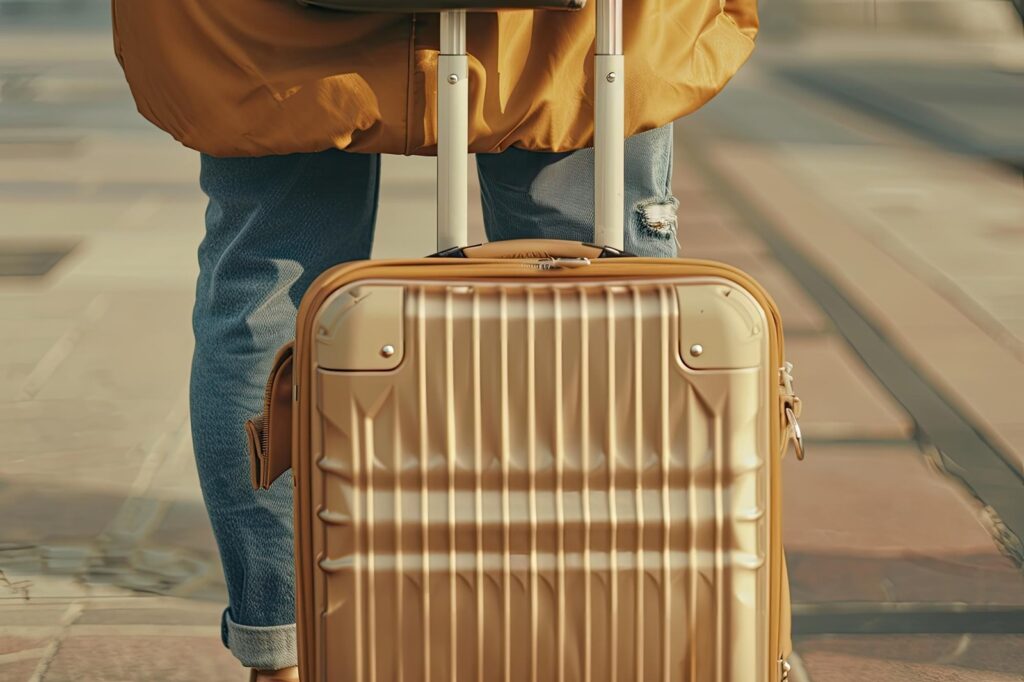Blog
Travel Bag Care: How to Make Your Luggage Last for Years

Investing in quality luggage can make all the difference in your travels. Whether it’s a fabric duffel, a sleek leather suitcase, or a sturdy polycarbonate carry-on, proper care is essential to keep your luggage in top shape for years to come. In this guide, we’ll walk you through cleaning, maintenance, and repair tips that will help extend the life of your travel gear.
1. Cleaning Different Materials
Each type of luggage material requires specific cleaning techniques to preserve its durability and appearance. Here’s how to care for the most common luggage materials:
Fabric (Nylon, Polyester, Canvas)
- Vacuuming: Start by vacuuming the exterior and interior of the bag to remove dust, dirt, and debris. Use a soft brush attachment to reach into seams and corners.
- Spot Cleaning: For stains, mix mild soap with lukewarm water and use a soft cloth or sponge to gently scrub the area. Avoid soaking the fabric, as excessive moisture can damage the bag’s structure.
- Deep Cleaning: If the bag is heavily soiled, remove any detachable parts (like shoulder straps) and hand wash the exterior. Let it air dry fully before storage or use.
Leather
- Dusting: Use a dry, soft cloth to wipe down the leather surface to remove dust.
- Conditioning: Apply a leather conditioner to keep the material supple and prevent cracking. Be sure to test a small area first to ensure the product doesn’t discolor the leather.
- Stain Removal: For minor stains, use a damp cloth and mild soap. For tougher stains like ink, consult a leather specialist to avoid damaging the material.
Polycarbonate (Hard-shell Luggage)
- Wiping: Clean the exterior with a damp cloth and a mild detergent. Avoid using abrasive sponges, as they can scratch the surface.
- Polishing: To restore the shine, use a specialized plastic polish or a mixture of vinegar and water. Apply in a circular motion using a microfiber cloth.
2. DIY Fixes for Zippers, Wheels, and Handles
Luggage components like zippers, wheels, and handles are the first to show signs of wear. Here’s how you can fix them yourself:
Zippers
- Stuck Zippers: Rub a bar of soap or apply a little petroleum jelly along the zipper teeth to ease movement.
- Broken Pull Tabs: Replace broken zipper pulls with a keyring or a paper clip until you can get a replacement tab.
Wheels
- Cleaning Wheels: Remove dirt and debris from the wheels by wiping them with a damp cloth. For stubborn buildup, use a small brush to clean around the axle.
- Fixing Broken Wheels: If your luggage has removable wheels, unscrew the damaged wheel and replace it with a new one from the manufacturer. If the wheels aren’t detachable, consider visiting a luggage repair shop.
Handles
- Stuck Telescopic Handles: Check for any obstructions in the handle tracks. Lubricate the mechanism with silicone spray to ensure smooth operation.
- Broken Handles: For soft bags, reinforce stitching around worn handles with strong thread or fabric glue. For hard-shell luggage, you may need to replace the handle assembly.
3. Proper Storage Techniques for Luggage
Storing your luggage correctly is just as important as caring for it during use. Follow these tips to avoid damage and wear when your bags are not in use:
- Clean Before Storing: Always clean your luggage before storing it. Any stains or dirt left on the bag can become harder to remove over time.
- Store in a Dry Place: Keep your luggage in a cool, dry place to avoid mold, mildew, and moisture damage. Avoid basements or areas prone to humidity.
- Avoid Overloading: Don’t stack heavy items on top of your luggage, as this can deform the bag, especially if it’s soft-sided.
- Use Dust Covers: If possible, store your luggage in a dust bag or cover it with a breathable fabric to protect it from dust and light exposure.
4. Best Practices for Avoiding Baggage Damage During Travel
Baggage damage is common during travel, especially when checked luggage is handled roughly by airport staff. Here’s how to minimize the risk:
- Use Luggage Covers: Protective covers are great for shielding your bags from scratches, scuffs, and dirt.
- Lock Zippers and Secure Straps: Use a TSA-approved lock to secure zippers and avoid them getting snagged during handling. Also, tuck in any loose straps to prevent them from catching on conveyors.
- Avoid Overpacking: Overstuffing your luggage can strain zippers and seams, making them more prone to breaking. Try to pack smartly and distribute weight evenly.
- Choose Direct Flights: The fewer times your luggage is handled, the less chance there is for damage. If possible, choose direct flights to avoid unnecessary baggage transfers.
Conclusion
Taking care of your luggage is an investment in your travel experience. By cleaning your luggage properly, performing simple repairs, and storing it with care, you can keep your bags looking and functioning like new for years to come. With a little effort, your luggage can withstand countless adventures while still protecting your belongings in style.
By following these tips, you’ll ensure that your luggage remains as ready for travel as you are!









